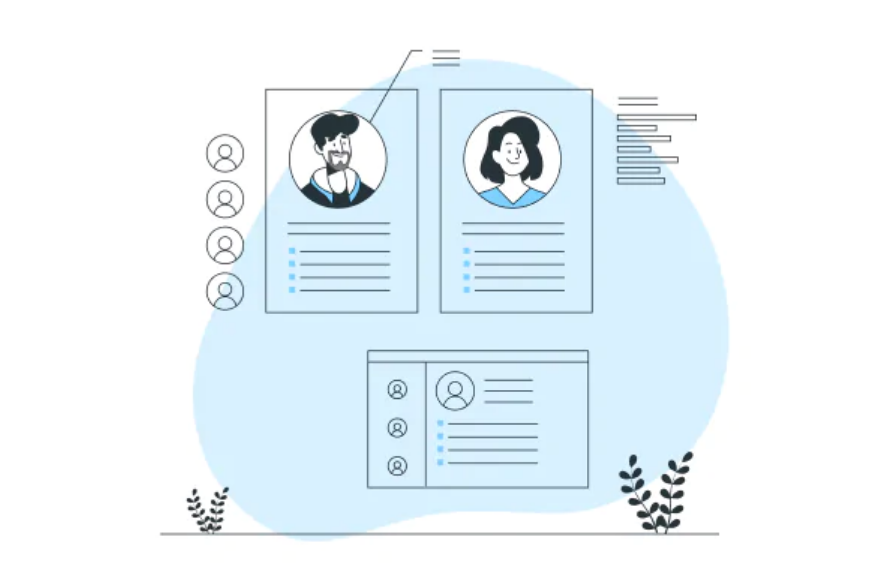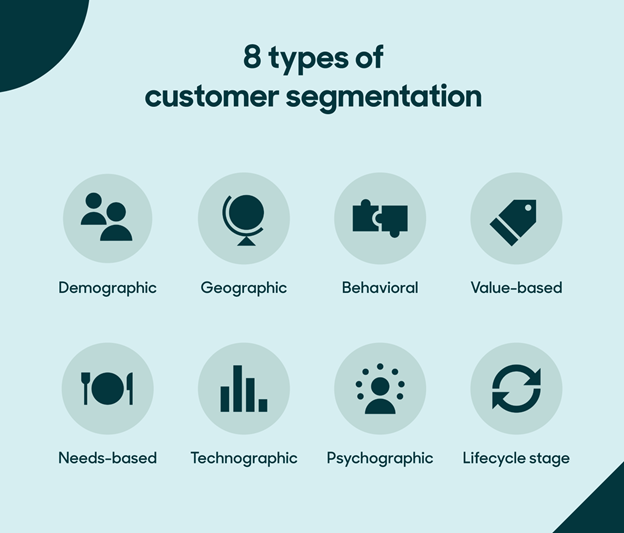User testing is a crucial step in the development and design process of websites, apps, and digital products. If people can’t easily engage with your product, you’ll likely struggle to gather feedback and improve what you’ve built.
Companies that observe real users interacting with both prototypes and nearly completed products are in a better position to identify pain points and opportunities for improvement before launching to the public. However, for your usability test to be a success, you’ll need to recruit a mix of people with different goals and mindsets.
While most participants will give you exactly what you need, there’s a good chance you’ll encounter a few challenging personality types who can make things more difficult than they need to be.
We’ve seen them all, from the overly enthusiastic participant who dominates discussions to the contrarian who seems to have an issue with everything. The bottom line is that difficult participant types can disrupt the normal cadence of your usability study.
Today, we will go over nine of the challenging personality types that you’ll likely encounter during testing, regardless of your industry. You’ll also learn how to work with these folks and make the most of your tests.
1. The Overly Enthusiastic Participant
First, let’s talk about the participant who tends to be a little too enthusiastic about testing. These people typically fall into this category because they try to quickly complete their test run and feedback form because they think the sooner they submit their responses, the quicker they will be able to provide valuable information.
The truth is, they are doing you a disservice. People with this personality type can actually skew your test results because they’re not paying as much attention to what they’re doing as a real user would. For example, they may say your website findability needs some work. But in actuality they didn’t stop to carefully look over your site, and that’s why they weren’t able to find the resources they were looking for.
How to handle overly enthusiastic participants:
If you want to handle this personality type, we suggest emphasizing to users the importance of taking their time before and during the test. You’ll also want to include clear instructions so they understand what you want and how they can best help. These people are often eager to help, but they’re more likely to go through at a slower pace when you request it.
2. The Distracted Participant
Regardless of whether you’re doing an in-person useability test or a virtual one, you’re bound to run into this personality type. Their trademark is leaving things incomplete, sometimes for days, or asking questions that were already explained at the start of the test.
The big problem with this participant type is you don’t always get enough data to make an accurate assessment of your product, website, or app. As a result, it’s harder to figure out what’s working and what needs to change.
We’ve found that the best way to help people who match this personality type is to give them a distraction-free environment. If you’re hosting a live event, quiet rooms and requesting that phones be turned off can help.
How to handle distracted participants:
For those who are hosting virtual usability testing, you’ll want to remove distractions from your test page. It’s also a good idea to allow people to take the test only from a desktop computer unless you’re doing specific mobile testing. Around 59% of all website traffic comes from smartphones, and these people tend to get easily distracted by other apps, text messages, and social media. The fewer things they have to get derailed by, the better.
3. The Tech-Savvy Expert
Now, let’s talk about the tech-savvy participant. Their trademark is that they tend to bring up issues that won’t affect a majority of your audience. They also have a habit of responding with a ton of jargon, which can make it difficult to compare their results to non-tech users.
Here’s an example: let’s say you want to do a little prototype testing on your new fitness app. Instead of saying, “Yes, I was able to find the meal prep section easily, and it was well organized,” they might go into a rant about the structure of your code and why it’s causing problems.
Don’t get us wrong; this information is inherently valuable. However, that’s not the point of this test. You just want to learn what the average person thinks of your UI and whether you need to add or remove buttons throughout the app.
How to handle tech-savvy experts:
The best way to overcome this participant type is to include what kind of feedback you want in the instructions. You can even add something like, “Please respond in general terms so your answer is easy to understand.” This step ensures your answers will be more consistent across the board.
4. The Reluctant Participant
Earlier, we talked about the overly enthusiastic participant. Our next personality type, the reluctant participant, is on the opposite end of the spectrum. These people are usually hesitant to share their thoughts, and when they do, they are usually very vague.
A vast majority of people who leave a site due to poor user experience won’t come back, so it’s easy to see why this could cause problems for your testing. Reluctant personality types don’t give you the data and insights you need to make meaningful changes, and that will cause problems down the line.
How to handle reluctant participants:
We’ve found the key to overcoming people with this mentality is to build rapport before they take the test. Whether you’re in-person or virtual, take some time to talk to them before the test so they feel confident and engaged before they start.
You’ll also want to include plenty of open-ended questions on your test. When people have to type out their responses, they’ll share more than if you post 10 multiple choices and one open question.
5. The Overly Critical Participant
There’s a fine line between constructive feedback and overly critical participants. Since you are running a test, you want to know if something doesn’t work well. However, if you run into this type of person, they may dwell on the negative a little more than necessary.
If, for example, they think your information architecture is a bit disorganized, it should be mentioned once, along with a couple of suggestions for fixing it. But if every question links back to this or another negative part of your test, you may be working with an overly critical participant.
How to handle overly critical participants:
The best thing you can do in this situation is acknowledge their concerns. You’ll win their favor, and they may be more willing to open up and share positive aspects of your test if you’re willing to ask.
You don’t want to ignore them, get defensive, or otherwise make them feel like their concerns are not valid. This could lead to a poor testing environment, which will only make things worse.
6. The Agreeable Participant
The next person on our list is the polar opposite of overly critical. These people are more interested in being agreeable all the time. They don’t like to give negative feedback, they won’t explain usability issues, and they will cause some problems with your testing.
If they are not sharing constructive feedback, that is, answers that address what they liked and what they didn’t, you’re not really getting good user feedback. Let’s say you want to run an A/B test, but most of your participants are agreeable – how do you choose the right page?
Everyone says both options are great, so it’s impossible to decide which will work best for the finished version of your product. This is particularly troubling if you’re trying to look at the raw data since 80% of marketers say actionable digital data is how they get the most conversions.
How to handle agreeable participants:
One strategy we suggest is to encourage honesty upfront. Let people know that you want the good and the bad together because otherwise, the picture is incomplete. You can also reach out to agreeable participants after the test and ask them follow-up questions. This strategy will help you figure out what they thought of their test run.
7. The Non-Verbal Participant
The next participants on our list are mostly for in-person user testing, but they are still important to understand. These people are what we call non-verbal participants. They don’t have a lot to say about the test, and this can be very frustrating.
You can’t obtain qualitative insights from people who refuse to tell you what they thought one way or another. If these people do answer, they tend to be vague. Yes or no answers will only get you so far, especially if you’re developing a product with a lot of moving parts. You don’t want to miss out on opportunities to improve because you don’t have accurate information.
How to handle non-verbal participants:
The best way to overcome this type of participant is to sit down with them afterward and ask them very specific questions that require a couple of sentences to explain. We’ve found that this will coax people into sharing their opinions, even if they were having trouble before.
You can also consider alternative testing methods, like screen sharing, to see how users interacted with your app or website, even if they won’t give you a direct answer.
8. The Over-Explaining Participant
Now, let’s talk about people who over-explain. And yes, there is a theme here—these participants are the opposite of the nonverbal type we discussed above.
When you’re dealing with an over-explainer, you’re going to get long-winded responses with personal anecdotes at every turn. This can make it hard to figure out what’s important and what is unnecessary. You have to slow down and comb through their responses to pick out the key points, and that’s something you might not have time to do.
How to handle over-explaining participants:
If you encounter this type of person during live user testing, politely ask a specific question to refocus them. When they’re done speaking, repeat their talking points back to them so they know you were listening. We’ve found that this validation helps them stay on task, even if they’re prone to going overboard with their explanations.
For virtual testers, you may want to add a character count to questions so there’s enough space to gain valuable insights without giving them too much space to over-explain.
9. The Speed Tester Participant
Finally, let’s talk about the speed tester. Instead of taking their time and working through your test, they treat it like they are racing against the clock. Since they’re acting so quickly, they don’t provide thoughtful feedback, which makes it difficult to learn how to improve your product.
Their experience is usually twice or even three times as fast as the average user. We’ve found that in virtually every case, speed testers are not representative of the average person. As a result, you don’t know if they had a poor experience because of your design process or if it’s because they hurried through it.
How to handle speed tester participants:
Our advice is to make it crystal clear to participants that this is not a timed test. Explain that you want them to take as much time as they need to explore your app or website so they can share advice that will actually help people.
You can slow people down and get them to think more by asking open-ended questions that have a character count they need to meet before they can enter. In most cases, this will help you get the best results from speedy testers.
Conclusion
There’s no question that usability testing is a crucial part of every business. Half of developers say they spend time correcting mistakes that could have been avoided. We believe that understanding the types of people taking your tests can help you land on the side of developers who think they’ve done everything they can based on user data.
Keep an eye out for these nine challenging participant types and remember how to handle them, and you’ll see much better results from your next testing session.
- 7 Tips to Write User Experience Questions - March 17, 2025
- User Journey vs. User Flow: Differences and Their Importance for UX - February 4, 2025
- Graphic Design to UX Design: An Ultimate Guide to Transitioning - December 30, 2024
![]() Give feedback about this article
Give feedback about this article
Were sorry to hear about that, give us a chance to improve.
Error: Contact form not found.




